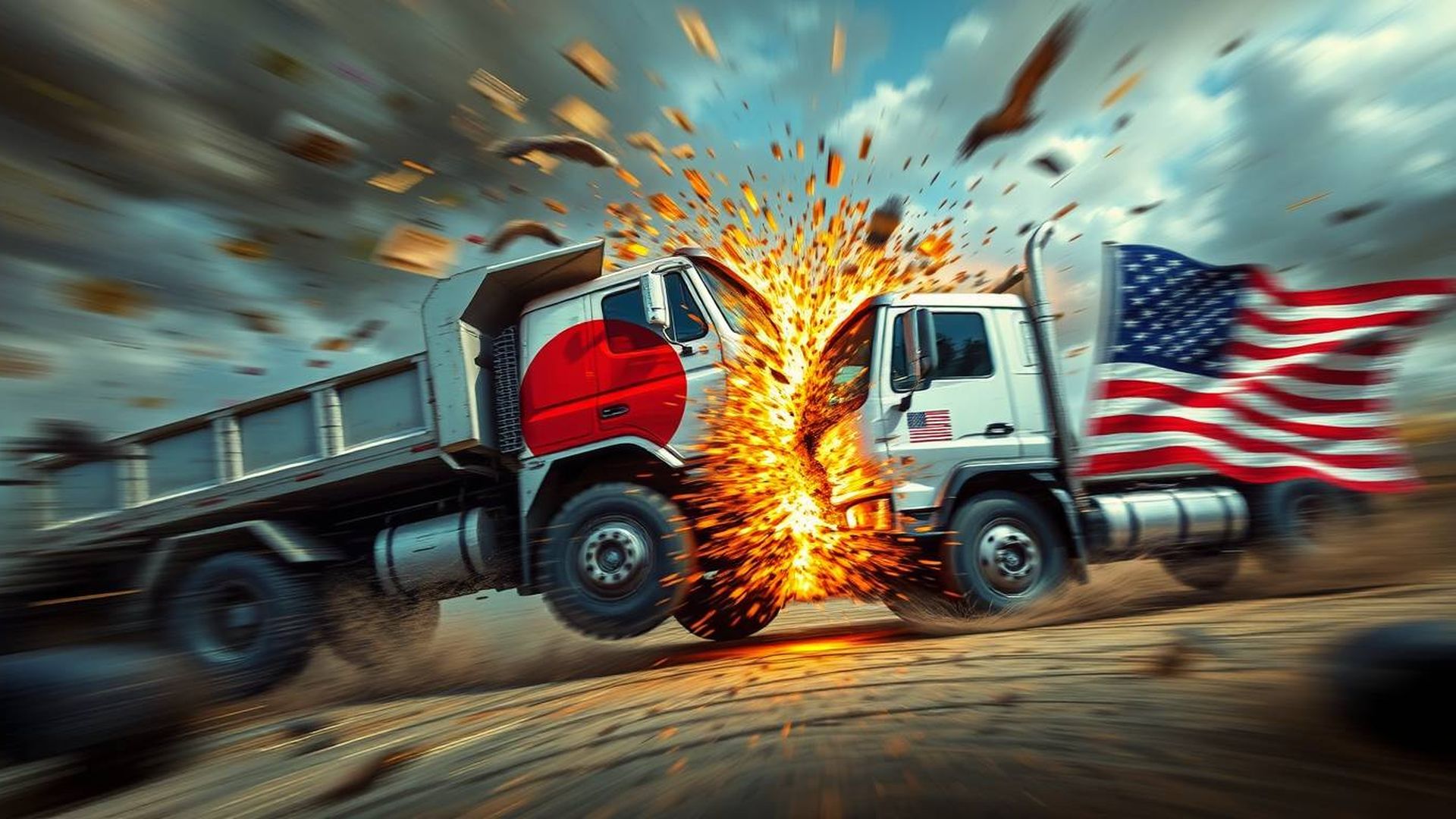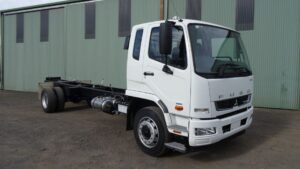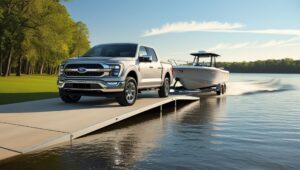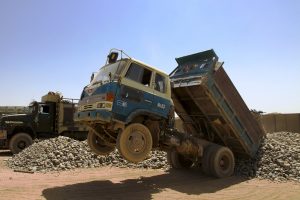In the world of heavy-duty transportation, Class 8 dump trucks represent the pinnacle of engineering designed to handle the most challenging tasks in construction, mining, and large-scale material hauling. Defined by a Gross Vehicle Weight Rating (GVWR) of 33,001 pounds or more, these trucks are engineered for durability, power, and reliability. While both Japanese and American manufacturers produce Class 8 dump trucks, their design philosophies, performance metrics, and market applications often differ. This article examines the characteristics of Class 8 dump trucks from Japan and the United States, comparing their strengths, weaknesses, and the specific roles they play in today’s heavy-duty industries.
Understanding Class 8 Dump Trucks
Class 8 trucks are the heavyweights of the trucking world, built to carry massive loads and operate in the most demanding environments. Dump trucks within this category are specifically outfitted with a hydraulically operated open-box bed, allowing for quick unloading of materials such as dirt, gravel, and construction debris. Their robust build, high horsepower, and specialized suspension systems enable them to perform heavy lifting and transport tasks efficiently. The competition between Japanese and American manufacturers in this category is intense, with each side leveraging its unique strengths.
Japanese Class 8 Dump Trucks: Engineering Efficiency and Precision
Japanese truck manufacturers such as Mitsubishi Fuso, Hino, Isuzu, and UD Trucks have long been recognized for their commitment to precision engineering, fuel efficiency, and advanced technology. In Japan, where stringent emissions standards and limited urban space drive innovation, these manufacturers have developed dump trucks that are not only powerful but also exceptionally efficient.
Key Characteristics:
-
Fuel Efficiency and Emission Control:
Due to high fuel costs and rigorous environmental regulations, Japanese trucks are designed to maximize fuel efficiency while minimizing emissions. Advanced engine management systems, turbocharging, and state-of-the-art emission control technologies are standard in these vehicles. For instance, models from Mitsubishi Fuso often feature engines optimized for both performance and low fuel consumption. -
Compact Design and Maneuverability:
Japanese roads, especially in urban and suburban settings, often require trucks to be compact and agile. Although Class 8 dump trucks are built for heavy loads, Japanese models tend to have a more refined chassis and tighter turning radii. This design philosophy ensures that even when loaded to capacity, these trucks can navigate challenging environments with precision. -
Reliability and Technological Integration:
Japanese manufacturers emphasize long-term reliability and durability. The integration of cutting-edge telematics and diagnostic systems enables fleet managers to monitor performance, schedule maintenance, and optimize routes. Such features are particularly beneficial in the dump truck segment, where downtime can be costly.
Example: Mitsubishi Fuso Super Great Dump Truck
While Mitsubishi Fuso’s Super Great series is well-known for its heavy-duty applications, its adaptations for dump truck configurations highlight the brand’s dedication to combining power with efficiency. These trucks are engineered to meet the needs of both urban construction projects and regional hauling, featuring robust engines paired with advanced control systems.
American Class 8 Dump Trucks: Raw Power and Rugged Durability
Across the Pacific, American truck manufacturers such as Kenworth, Peterbilt, Mack, and Freightliner have built a reputation for producing vehicles that emphasize raw power, high payload capacities, and rugged durability. These trucks are frequently seen in the expansive mining sites, large construction projects, and long-haul operations that characterize the American heavy-duty transportation landscape.
Key Characteristics:
-
High Horsepower and Payload Capacity:
American Class 8 dump trucks are engineered with large diesel engines that deliver substantial horsepower and torque. This focus on power translates into higher payload capacities, making them ideal for applications where maximum load and heavy-duty performance are critical. Trucks like the Kenworth T880 and Mack Granite Dump Truck are prime examples of this performance-oriented design. -
Robust Construction and Customization:
Built to withstand the toughest operating conditions, American dump trucks often feature reinforced frames, heavy-duty suspensions, and advanced cooling systems. The modular design of these trucks also allows for extensive customization, enabling operators to tailor the vehicle to specific job requirements—whether it’s adding specialized dump beds, extra storage, or enhanced safety features. -
Extensive Dealer and Service Networks:
The vast network of dealerships and service centers across the United States ensures that American truck owners have ready access to parts, repairs, and technical support. This comprehensive after-sales service is a crucial advantage, particularly in remote areas where downtime can significantly impact project schedules.
Example: Peterbilt 386 Dump Truck
The Peterbilt 386 is a flagship model that epitomizes American heavy-duty trucking. With a focus on power and durability, the Peterbilt 386 is designed to handle the extreme demands of heavy construction and mining operations. Its robust diesel engine, combined with a spacious and ergonomically designed cab, provides operators with both performance and comfort during long hauls.
Comparing Key Attributes: Japanese vs. American Dump Trucks
When evaluating Class 8 dump trucks from Japan and America, several key factors come into play:
1. Engine Performance and Efficiency:
-
Japanese Trucks:
Emphasize fuel efficiency and reduced emissions. Engine designs often incorporate advanced technologies to ensure longevity and optimal performance in varying load conditions. While they may not always match the horsepower of their American counterparts, they make up for it with excellent fuel economy and lower operational costs over time. -
American Trucks:
Prioritize raw power and higher horsepower outputs. This makes them ideally suited for scenarios where maximum payload and aggressive hauling are necessary. However, this increased power can come at the expense of fuel efficiency, leading to higher operational costs in fuel-intensive operations.
2. Design Philosophy and Maneuverability:
-
Japanese Trucks:
Designed with precision and compactness in mind, Japanese dump trucks often feature a more agile chassis that is well-suited for urban environments and tight job sites. Their design maximizes space without sacrificing the essential durability required for heavy loads. -
American Trucks:
Tend to be larger and more robust, with a focus on enduring the harsh conditions of large-scale construction and mining sites. Their size and reinforced construction provide unmatched durability, though they may lack the nimbleness of their Japanese counterparts in congested settings.
3. Technological Integration and Reliability:
-
Japanese Trucks:
Benefit from a high degree of technological integration. Advanced diagnostic systems, telematics, and automated features enhance reliability and provide fleet managers with real-time data to optimize maintenance and operation schedules. -
American Trucks:
While also incorporating modern technologies, American dump trucks often lean towards customization and rugged reliability over technological finesse. Their designs are tested to perform under extreme conditions, ensuring that they can handle high-stress environments with minimal downtime.
4. Service and Support Networks:
-
Japanese Trucks:
Enjoy robust service networks in Asia and are increasingly establishing a presence in global markets. However, the support infrastructure may vary depending on the region outside of Japan. -
American Trucks:
Benefit from an extensive and well-established service network across North America. This comprehensive support system is a significant advantage, particularly for operators in remote or hard-to-reach areas.
Use Case Considerations: Choosing the Right Truck
The decision between a Japanese or American Class 8 dump truck often comes down to the specific operational needs of the business:
-
For Urban and Regional Projects:
Japanese dump trucks, with their superior fuel efficiency and compact design, are ideal for projects in urban environments or regions where space is at a premium. Their technological features and reliability make them a sound investment for companies that prioritize low operational costs and high efficiency. -
For Large-Scale Construction and Mining:
American dump trucks excel in applications requiring maximum payload, rugged durability, and the ability to operate in extreme conditions. The higher horsepower and customizable configurations make them the preferred choice for large construction sites, mining operations, and long-haul transportation across challenging terrains.
Conclusion
Both Japanese and American Class 8 dump trucks bring unique strengths to the table, and the choice between them depends on the operational context and business priorities. Japanese manufacturers focus on efficiency, precision engineering, and advanced technology to produce trucks that are exceptionally reliable and fuel-efficient. In contrast, American manufacturers emphasize raw power, durability, and customization, ensuring that their trucks can handle the most demanding heavy-duty applications.
For companies operating in urban or regional settings, the benefits of Japanese trucks—such as lower fuel consumption, compact design, and advanced telematics—can result in significant cost savings and operational efficiency. On the other hand, for those engaged in large-scale construction or mining, the rugged build and higher payload capacity of American trucks make them the ideal choice despite potentially higher fuel costs.
In summary, understanding the distinct attributes of Japanese versus American Class 8 dump trucks is crucial for making an informed decision that aligns with your operational needs and business goals. Whether it’s the efficient, technology-driven approach of Japanese trucks or the powerful, robust design of American models, both have proven themselves indispensable in the demanding world of heavy-duty transportation.
By weighing these factors carefully, fleet managers and decision-makers can select the truck that not only meets their immediate needs but also delivers long-term value and performance in the dynamic world of heavy construction and material hauling.




